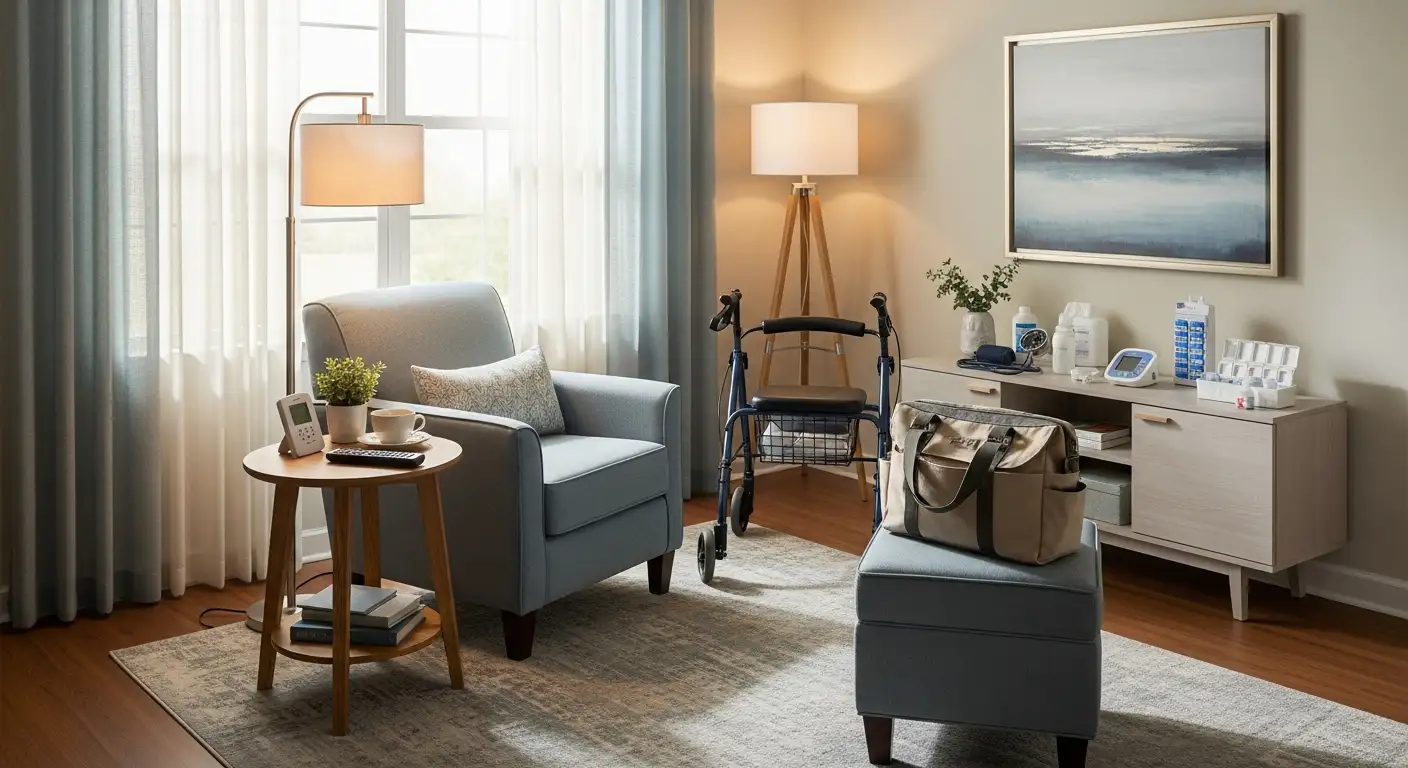Mental Health Access Challenges
Urbanization Impact on Services
Urbanization significantly affects mental health service access. The rapid growth of urban areas increases the demand for mental health support, leading to a strain on existing services. As urban populations expand, there is a heightened risk of mental and behavioral health issues. This situation exacerbates mental health inequalities, especially in densely populated areas, where the need for services often exceeds their availability [1].

Urbanization EffectsDescriptionIncreased DemandRapid urban growth leads to higher demand for mental health services.Elevated RiskUrban residents experience a greater risk of mental health issues.Mental Health InequalitiesDisparities in service access increase among diverse population groups.
Disparities in Mental Health Care
Disparities in mental health care access are evident, particularly among disadvantaged populations in urban settings. These groups tend to report more significant mental health challenges and face barriers when trying to obtain needed services [1]. A prevalent belief among the general public is that mental health services are not available to everyone. About 74% of Americans think that mental health care is inaccessible, and nearly 47% feel that options are limited [2].
Income level also influences access to mental health services. Individuals from lower-income households are often less aware of available treatment options and are more likely to seek help at community centers, which may not be as qualified as specialized mental health facilities. Notably, over half (53%) of Americans who have not pursued mental health treatment come from low-income backgrounds [2].
Access DisparitiesStatisticsInaccessibility Perception74% of Americans believe mental health services are not accessible.Limited OptionsAbout 47% feel the available options are inadequate.Lower-Income Challenges53% of those who have not sought treatment belong to low-income households.
Understanding these challenges is crucial for addressing the systemic issues faced by those in need of mental health support. Efforts to improve access can lead to better overall well-being for elderly individuals and caregivers alike. For further information on managing care for seniors, explore our resources on personal care services and coordinating NHTD services.
Strategies for Improved Access
Improving access to mental health services is crucial, particularly in urban environments where challenges are exacerbated by rapid urbanization. Various strategies can be implemented to enhance service availability and effectiveness, particularly for elderly individuals and their caregivers.
Targeted Resource Allocation
Targeted resource allocation focuses on directing mental health resources to populations that are disproportionately affected by mental health issues. Disadvantaged groups in urban areas often report higher incidences of mental health disorders and face significant barriers to accessing care. To address these disparities, targeted strategies are essential for developing services tailored to the unique needs of these individuals.
Resource allocation can include:
Strategy ComponentDescriptionFundingIncrease financial support for community mental health infrastructure.Training ProgramsEquip professionals with skills to serve at-risk populations.Outreach ProgramsEducate communities on available mental health resources.
Implementing these strategies can help mitigate the growing inequalities in mental health service access within urban settings [1].
Integrated Healthcare Initiatives
Integrated healthcare initiatives aim to combine mental health services with general health care to streamline access and improve outcomes. This approach recognizes the interconnectedness of physical and mental health, particularly among the elderly population who often face multiple health challenges.
By integrating mental health with general healthcare services, elderly individuals can receive more comprehensive care. Benefits of such initiatives include:
Initiative AspectBenefitsHolistic CareAddresses comprehensive health needs of elderly individuals.CoordinationEnhances communication between mental health and physical health providers.Reduced StigmaEncourages more seniors to seek mental health support.
Through integrated healthcare, communities can create a more accessible framework for mental health services, ensuring that elderly individuals receive the necessary support to maintain their overall well-being. Strategies like these can help combat the perception that mental health services are not widely accessible, a belief held by 74% of Americans. For more information on how to manage care transitions and coordinate services, explore our resources on managing care transitions and coordinating nhtd services.
Advancements in Behavioral Telehealth
In recent years, behavioral telehealth has emerged as a crucial approach for enhancing access to mental health services. By leveraging technology, telehealth provides flexible options for individuals seeking support. This section discusses the benefits of individual and group teletherapy, two significant components of telehealth.
Individual Teletherapy Benefits
Individual teletherapy can be conducted through video or audio-only telehealth services. This format offers several advantages that can be particularly beneficial for elderly individuals and their caregivers. Key benefits include:
Group Teletherapy Benefits
Group teletherapy involves multiple participants meeting with a therapist remotely. This approach not only enhances access to care but also fosters a sense of community among participants. The benefits include:
Studies have shown that before the COVID-19 pandemic, telehealth was effective in managing and treating mental health conditions, often with outcomes comparable to or better than in-person care. Furthermore, this approach has been particularly valuable in rural areas, where access to healthcare services may be limited. Patient satisfaction with virtual interactions has also increased, reinforcing the role of telehealth in the mental health landscape [4].
The integration of behavioral health care services into primary care via telehealth creates opportunities for instant, remote interaction between patients and providers. This not only improves access to care but also supports a more holistic approach to health care management [4]. As telehealth continues to evolve, it serves as a vital tool for enhancing mental health services access for elderly individuals and their caregivers.
Addressing Substance Use Disorders
The integration of behavioral telehealth into the treatment of substance use disorders has proven to be a significant advancement in mental health services access. This technology allows individuals to engage in treatment programs more conveniently and in a manner that can enhance their overall recovery journey.
Role of Behavioral Telehealth
Behavioral telehealth interventions play a crucial role in addressing substance use disorders. They can be part of a comprehensive treatment approach, particularly when combined with other methods such as medication-assisted treatment and counseling. Patients can receive care from the comfort of their homes, which makes it easier to access providers who specialize in substance use disorders and maintain continuity with their regular therapists. This ongoing support is essential in ensuring that individuals receive consistent and effective care throughout their recovery.
Studies have highlighted that before the COVID-19 pandemic, telehealth was effective for managing mental health conditions, with outcomes that were similar or even better than traditional in-person care. This increased access is particularly beneficial in rural areas, where the availability of mental health care services may be limited.
Home-Based Care Advantages
Home-based care provides numerous advantages for individuals seeking treatment for substance use disorders. With telehealth's privacy and convenience, patients experience reduced travel time and have minimal disruption to their daily activities. This mode of treatment can lessen the stigma often associated with attending in-person clinic visits, promoting a more accepting approach toward seeking help [3].
Furthermore, implementing telehealth models allows for connections between behavioral health services and primary care practices. This integration enables patients to receive prompt access to care through warm hand-offs, enhancing the overall mental health services delivery. Many patients value the option to manage their mental health from home, creating a safe and comfortable environment that fosters healing [4].
The growing demand for mental health services underscores the importance of expanding access options. Nearly six in 10 Americans are actively seeking mental health services for themselves or loved ones, highlighting the need for accessible solutions to mental health and substance use disorders.
By utilizing behavioral telehealth and promoting home-based care strategies, individuals facing substance use disorders can benefit from improved access to essential mental health services. These advancements not only enhance treatment options but also empower patients to take charge of their recovery in a supportive and flexible manner.
Current Mental Health Services Demand
Growing Need for Services
The demand for mental health services in the United States is on the rise. Nearly 60% of Americans are either seeking or wanting to seek mental health assistance, reflecting a significant need for support [2]. In fact, a staggering 56% of Americans have actively pursued help for mental health issues. This trend highlights the increasing awareness of mental health's importance, as more individuals recognize the necessity of professional support.
The need for mental health services is not limited to specific demographics; rather, it spans across various ages and backgrounds. However, certain groups may be more at risk for mental health disorders. For instance, low-income individuals and those residing in rural areas face unique challenges that may affect their access to care.
Demographic GroupPercentage Seeking Help (%)General Population56Low-Income Households53Rural ResidentsLess likely to seek specialized care
Perception of Access to Care
Despite the clear demand for mental health services, perceptions about accessibility remain troubling. The overwhelming majority (74%) of Americans believe that mental health services are not accessible to everyone, and almost half (47%) feel that options are limited. These perceptions are often attributed to inadequate funding and insufficient support from both the government and insurance providers. A notable 64% of individuals who have sought treatment believe there should be more governmental initiatives aimed at enhancing mental health services.
Access disparities are evident, especially among low-income individuals who tend to be less informed about where to seek treatment. This group often relies on community centers rather than qualified mental health facilities, creating barriers to quality care. Research reveals that individuals in rural areas are often less likely to perceive mental health services as accessible, contributing to a growing crisis in mental health care access.
Perception IndicatorPercentageBelieve services are not accessible74Think options for services are limited47Feel government should improve services64
This landscape illustrates the urgent need for addressing both the growing demand for mental health assistance and the perceived barriers to accessing such services. For caregivers and elderly individuals seeking help, it is vital to navigate the available resources effectively. For information on enhancing home environments to support mental well-being, refer to our article on creating a safe home environment.
Disparities in Access Across States
Access to mental health services varies significantly across the United States. Several factors contribute to these disparities, including state-level challenges and differences based on geographic location.
State-Level Challenges
Certain states struggle to provide adequate mental health services due to a combination of insufficient funding, lack of facilities, and a scarcity of qualified providers. For instance, states like Texas, Wisconsin, and Georgia face difficulties in keeping up with the demand for mental health care, as noted by The National Council. In contrast, states such as Pennsylvania, New York, and Minnesota exhibit better availability of mental health resources and facilities.
The following table summarizes the availability of mental health providers and services in various states:
StateProvider AvailabilityFunding SupportMental Health FacilitiesTexasLowLimitedFewWisconsinLowLimitedFewGeorgiaLowLimitedFewPennsylvaniaHighAdequateManyNew YorkHighAdequateManyMinnesotaHighAdequateMany
Disparities Based on Location
Geographic differences significantly impact access to mental health services. Rural areas often have fewer providers than urban locations, leading to reduced availability of care for rural residents. Vulnerable populations, particularly those with mental health challenges (MHC), continue to encounter barriers even after reforms, such as the Affordable Care Act (ACA). Approximately one-fifth of U.S. adults with MHC lack a usual source of care, and over half report affordability-related issues when seeking health services [5].
Individuals living in rural regions are less likely to access mental health specialists, which exacerbates existing inequalities. The following table highlights the comparison of mental health access between urban and rural areas:
LocationAccess to Mental Health ServicesLikelihood of Seeking CareUrbanHighHigherRuralLowLower
Despite improvements triggered by healthcare reforms, significant challenges persist. Rising healthcare costs, high rates of un- and underinsurance, and fears regarding potential ACA rollbacks contribute to the ongoing access issues facing many Americans. Addressing these disparities is essential for ensuring that all individuals, regardless of their location or socioeconomic status, can access necessary mental health care.
References
[2]:
[3]:
[4]:
[5]:
[6]:



